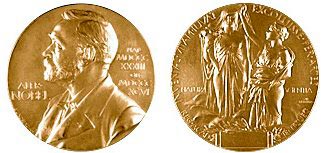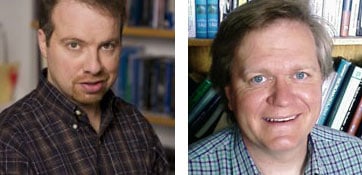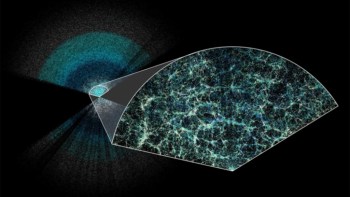
The 2011 Nobel Prize for Physics has been awarded to Saul Perlmutter from the Lawrence Berkeley National Laboratory, US, Adam Riess at Johns Hopkins University, in Baltimore, and Brian Schmidt from the Australian National University, Weston Creek, “for the discovery of the accelerating expansion of the universe through observations of distant supernovae”.
Perlmutter has been awarded a half of the SEK10m (£934,000) prize, with Riess and Schmidt sharing the other half. In a statement, the Royal Swedish Academy of Sciences said “For almost a century, the universe has been known to be expanding as a consequence of the Big Bang about 14 billion years ago. However, the discovery that this expansion is accelerating is astounding. If the expansion will continue to speed up the universe will end in ice.”
Going against gravity
Only 25 years ago most scientists believed that the universe could be described by Albert Einstein and Willem de Sitter’s simple and elegant model from 1932 in which gravity is gradually slowing down the expansion of space.
From the mid-1980s, however, a remarkable series of observations was made that did not seem to fit the standard theory, leading some people to suggest that an old and discredited term from Einstein’s general theory of relativity – the “cosmological constant” or “lambda” – should be brought back to explain the data.
This constant had originally been introduced by Einstein in 1917 to counteract the attractive pull of gravity, because he believed the universe to be static. He considered it a property of space itself, but it can also be interpreted as a form of energy that uniformly fills all of space; if lambda is greater than zero, the uniform energy has negative pressure and creates a bizarre, repulsive form of gravity. However, Einstein grew disillusioned with the term and finally abandoned it in 1931 after Edwin Hubble and Milton Humason discovered that the universe is expanding.
In 1987 physicists at the Lawrence Berkeley National Laboratory and the University of California at Berkeley initiated the Supernova Cosmology Project (SCP) to hunt for certain distant exploding stars, known as type Ia supernovae. They hoped to use these stars to calculate, among other things, the rate at which the expansion of the universe was slowing down.
Deceleration was expected because in the absence of lambda, many people thought that “ΩM”, which is the amount of observable matter in the universe today as a fraction of the critical density, was sufficient to slow the universe’s expansion forever, if not to bring it to an eventual halt.
In 1998, after years of observations, two rival groups of supernova hunters – the High-Z Supernovae Search Team led by Schmidt and Riess and the SCP led by Perlmutter – came to the conclusion that the cosmic expansion is actually accelerating and not slowing under the influence of gravity as might be expected.
The two teams came to this conclusion by studying type Ia supernova where they found that the light from over 50 distant supernovae was weaker than expected. This was a sign that the expansion of the universe was accelerating.
In order to account for the acceleration, about 75% of the mass-energy content of the universe had to be made up of some gravitationally repulsive substance that nobody had ever seen before. This substance, which would determine the fate of the universe, was dubbed dark energy.
It is now thought that dark energy constitutes around 75% of the current universe, with around 21% being dark matter and the rest ordinary matter and energy making up the Earth, planets and stars.
“The findings of the 2011 Nobel Laureates in Physics have helped to unveil a universe that to a large extent is unknown to science,” stated the Academy. “And everything is possible again.”
“My involvement in the discovery of the accelerating universe and its implications for the presence of dark energy has been an incredibly exciting adventure,” says Riess. “I have also been fortunate to work with tremendous colleagues and powerful facilities. I am deeply honored that this work has been recognized.”
New problems
Cosmologist Michael Turner from the University of Chicago says that the award to Perlmutter, Riess and Schmidt is “well deserved”. “The two competing teams is a wonderful story in science – the physicists vs the astronomers,” says Turner. “The biggest surprise to both teams was that the other team got the same answer. Each team believed the other didn’t know what they were doing.”
Turner adds that before the discovery, cosmology was in some disarray with astronomers having a model of the universe based on cold dark matter and inflation, but with not enough matter to make the universe flat – a key prediction of inflation.
“Dark energy and cosmic acceleration was the missing piece of the puzzle,” says Turner. “Moreover, in solving one problem, it gave us a new problem – what is dark energy? I think that is the most profound mystery in all of science.”
Robert Kirshner from Harvard University who supervised both Schmidt and Riess when they were PhD students says the decision by the Nobel committee is “great” as it will mean “no more waiting”. “We did a lot of foundational work at Harvard and my postdocs and students made up a hefty chunk of the High-Z Team,” says Kirshner. “[Riess] did a lot after the initial result to show that there was no sneaky effect due to dust absorption and that, if you look far enough into the past, you could see that the universe was slowing down before the dark energy got the upper hand, about five billion years ago.”
Kirshner adds that Perlmutter is also “very deserving” of the prize. “[Perlmutter] was persistent even when his programme was moving slowly and, despite getting a contrary result in 1997, was convinced of cosmic acceleration during 1998 by comparing his own extensive data set of distant supernovae with the nearby supernovae measured by the group in Chile.”
Peter Knight, president of the Institute of Physics, which publishes physicsworld.com says the work has “triggered an enormous amount of research” on the nature of dark energy. “These researchers have opened our eyes to the true nature of our universe. They are very well-deserved recipients,” says Knight.
Leading lights
Born in Champaign-Urbana, Illinois, in 1959, Perlmutter graduated from Harvard University in 1981 receiving his PhD from the University of California, Berkeley in 1986 where he worked on robotic methods of searching nearby supernovae. He then moved to the Lawrence Berkeley National Laboratory and the University of California, Berkeley. Perlmutter now heads the SCP based at Lawrence Berkeley National Laboratory.
Schmidt was born in Missoula, Montana, in 1967. He graduated from the University of Arizona in 1989 and received his PhD from Harvard University in 1993 on using type II Supernovae to measure the Hubble Constant. During postdocs at Harvard, Schmidt, together with Nicholas Suntzeff from the Cerro Tololo Inter-American Observatory in Chile, formed the High-Z Supernovae Search Team. In 1993 Schmidt then went to the Harvard-Smithsonian Center for Astrophysics for a year before moving to the Australian National University where he is currently based.
Riess is also a former member of the High-Z Supernovae Search Team where he lead the 1998 study that reported evidence that the universe’s expansion rate is now accelerating. He was born in Washington, D.C in 1969 and graduated from The Massachusetts Institute of Technology in 1992. Riess received his PhD from Harvard University in 1996 researching ways to make type Ia supernovae into accurate distance indicators. In 1999 he moved to the Space Telescope Science Institute at Johns Hopkins University.





